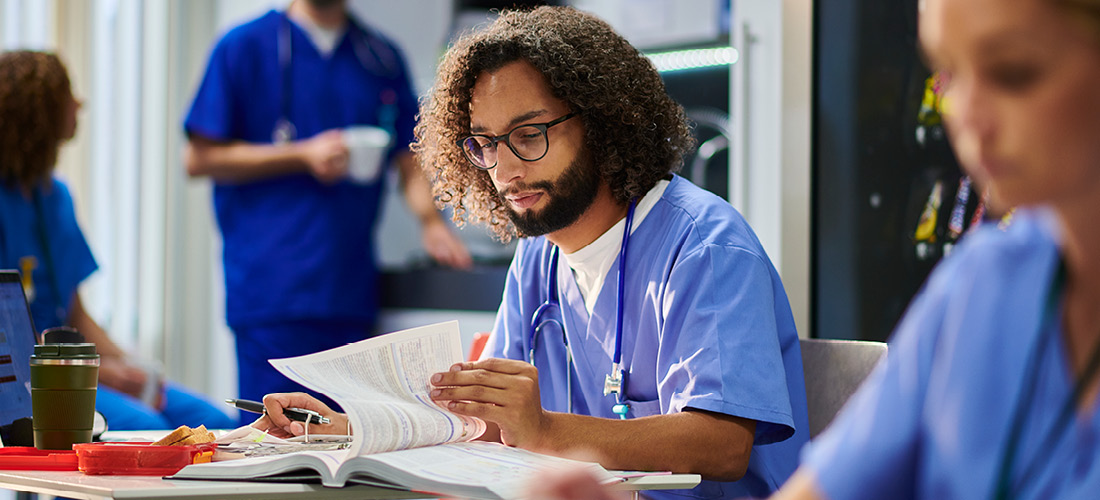Anatomy and physiology (A&P) is one of the core courses for a range of health-related fields, including nursing. It’s one of the most important foundational courses to learn the concepts that underpin medicine, human development, and the diagnosis and treatment of disease.
Still, no matter how passionate they are about nursing, many nursing students are anxious about A&P and its difficulty. Find out what you’ll learn in A&P, what to expect from the course, and how you can maximize your success.
What Is Anatomy and Physiology?
Anatomy and physiology are two studies in the life sciences. Anatomy refers to the internal and external structures of the body and how they relate to each other, while physiology refers to the study of how those structures function.
The anatomy and physiology courses for nursing cover a basic introduction to the broad study of the two disciplines, but they each have branches that cover more advanced and detailed information.
For example, anatomy includes both gross anatomy, the study of body structures that can be seen without magnification, and microscopic anatomy or histology, which covers the study of the smallest structures of the body. Physiology has branches as well, including cell physiology, endocrinology, exercise physiology, and clinical physiology, some of which may be part of your more advanced nursing studies.
What Do You Learn in Anatomy and Physiology?
Anatomy and physiology approach two aspects of studying the human body.
The anatomy portion deals with the structural organization of an organism, which includes the musculoskeletal, nervous, circulatory, immune, respiratory, digestive, and reproductive systems. It also includes the study of anatomy on a microscopic level with organ and tissue cells.
Physiology covers the principal organ systems as well, but it focuses more on the functions of the cells and organs in biological systems instead of their structure. It may cover the broad study of physiology or a narrower focus, such as the digestive or cardiovascular system.
For example, something you may take away from the course is an understanding of how cells develop, how muscle groups are used in different sports, or how a disease moves through the body.
What to Expect in an A&P Online Course
A&P online courses include all the information you would receive in cohort (in-person) learning, but you’ll experience it all virtually. These courses comprise lectures, quizzes, assignments, exams, and a lab portion to build laboratory skills.
- Some of the skills you’ll develop in the course include:
- Defining the systems that provide protection and support for the body
- Understanding how muscle tissue and the muscular system support movement and stability
- Generalizing the chemical, cellular, and tissue levels and their function in the body
- Summarizing how the nervous system regulates, integrates, and controls the body
Typically, labs are a very hands-on part of science learning, but technology allows that experience to be recreated online with virtual lab tools, video conferencing, discussion boards, and proctored exams.
The lab portion of A&P may include:
- Understanding science labs, the scientific method, and writing lab reports
- Demonstrating lab safety and processes
- Analyzing cell types and muscle tissue types in functional groups
- Demonstrating osmosis in hypotonic and hypertonic solutions
- Examining the functions and components of the central and peripheral nervous systems
Is Anatomy and Physiology Hard?
For many nursing students, anatomy and physiology is one of the toughest prerequisite classes. It encompasses a lot of information and requires strong memorization skills, because A&P will form the foundation you will build upon to learn more advanced information about the human body and its function.
Anatomy and physiology may be hard, but it’s not impossible. With strong study skills and a commitment to learning, you can succeed in this course.
How to Study for Anatomy and Physiology
Does this information seem overwhelming? Anatomy and physiology can be a challenging course that you need to succeed in as a prerequisite for the nursing program, but robust study strategies can help you pass your course with flying colors.
Here are some study tips to ensure your success:
Break the Information Down to Manageable Sections
Part of the challenge of anatomy and physiology is the sheer volume of information the course covers. Keep up with your reading, and instead of reading a whole chapter at once, break it up into smaller sections. Make sure you fully grasp the concept before moving forward, as this course uses scaffolding learning – it all builds on the concepts you learned previously.
Test Yourself Along the Way
Most texts and course modules have review tools to self-evaluate your understanding of the concepts and knowledge. Test yourself regularly and note which concepts felt shaky to you. That’s an opportunity to go back through and review the information again or ask your instructor for more guidance.
Seek Help from Your Instructor or Peers
Whether online or in person, your instructor and peers are an asset in your learning experience. If you feel that you’re not grasping the material, talk to your classmates and go over the concepts together. You could also reach out to your instructor and ask for clarification.
Understand Your Learning Style
Anatomy and physiology uses a lot of memorization, diagrams, and unfamiliar terms, such as names that have origins in Latin or Greek, all of which you will have to learn. You will need to know your learning style and how you study best to succeed. For some, flashcards are the best way to go over terms and concepts to retain them. For others, mnemonic devices to memorize the bones or muscle groups are effective.
Don’t Get Discouraged
If you’re struggling in a section, try not to get discouraged. You may excel at memorizing the names of bones and muscles while struggling in more conceptual sections like the function of the respiratory system. You will need to use a range of skill sets to succeed in anatomy and physiology, so try not to be too hard on yourself if it doesn’t all come easily to you. Keep studying and looking toward the finish line.
Get Started Using Sophia's Nursing Pathway
Curious about what’s in store with anatomy and physiology? You can check out our A&P course at Sophia or explore our Sophia Nursing Pathway - a flexible 13-course science pathway created to help you make progress toward your degree by taking our diverse selection of science and health-related course, all designed to transfer. Get started today!



